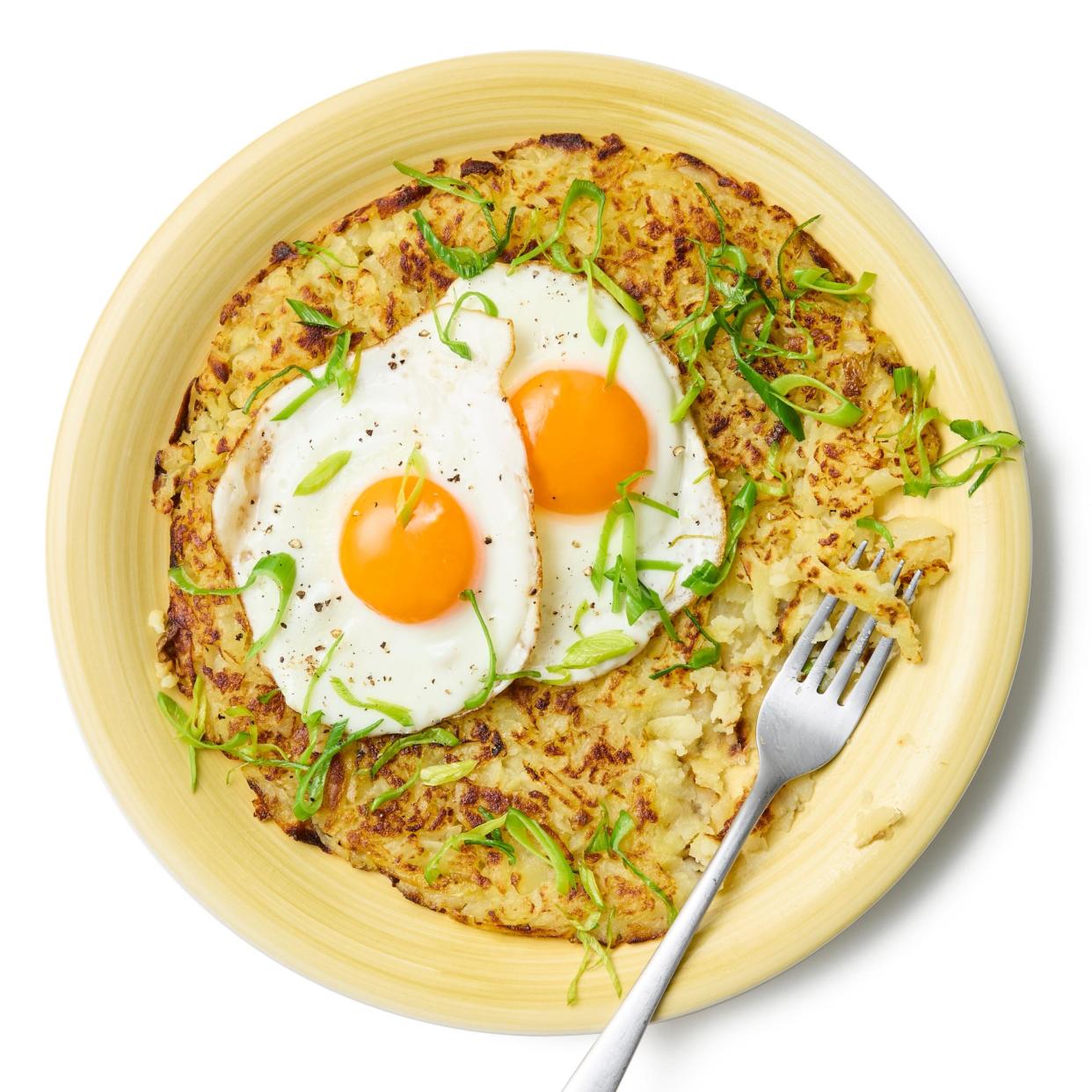How to make potato rösti – recipe

The Swiss have a reputation as a secretive people, and indeed there is a curious dearth of cookbooks for English speakers hoping to master recipes such as this crisp potato pancake described by the Swiss government as “one of the country’s best-known national dishes”. Originally a rustic breakfast, it’s now a popular accompaniment to everything from sausages to cheese, and too good not to share.
Potato rösti
Prep 5 min
Chill 2 hr
Cook 40 min
Serves 4 as a side dish, 2 as a main course
2 medium-sized waxy potatoes
Salt and pepper
1 tbsp butter
1 tbsp goose fat (see step 5)
1 A note on the potatoes
The success of such a simple dish relies heavily on using the correct ingredients. If you have only floury potatoes, for instance, I’d suggest making tattie scones instead. Common waxy varieties in the UK include charlotte, anya, nicola, jersey royals and maris peer. Supermarket labelling can be opaque at the best of times, but salad or new potatoes are usually another good bet.
2 Prep the spuds
There’s no need to peel the potatoes, unless they’re so dirty they’re almost impossible to scrub clean; the skin will add flavour. Pick spuds of a roughly equal size, give them a wash, then put them in a pan and just cover with cold water. Add a generous amount of salt, cover and bring to a boil.
3 Cook the spuds
Take off the lid, turn down the heat a little and parboil until the potatoes are just tender to a skewer or knife poked into the centre, but not fully soft. Drain, leave to cool, then chill for at least a couple of hours – do not be tempted to skip this step, because it helps to firm up the potatoes enough to make them easier to grate. If you want your rösti for breakfast, for example, do this the night before.
4 Then grate and flavour the potatoes
Coarsely grate the potatoes, skins and all, then season generously with salt and black pepper, and toss to combine. Find a frying pan of about 25cm in diameter: any larger, and it will be hard to flip the rösti; too small, and the potato pancake will be too thick. A nonstick pan will make your life easier, but is not essential.
5 A note on the fats
Add half the fats – I like the mixture listed for the crispness that goose fat, with its higher smoke point, gives, along with the rich flavour of butter, but just about any fat, from beef dripping to olive oil, will work here, which means this dish is pretty easy to make vegetarian or even vegan as required.
6 Melt the fat, then add the potatoes
Put the pan on a medium-high heat until the fats are sizzling, then add the potato strands. Quickly spread them out to cover the pan, then cook undisturbed for a couple of minutes. Using a spatula, shape the potato mixture into a flat cake, pressing down on it as lightly as possible so not to crush the potatoes into mash.
7 Fry until golden
Leave to cook for a couple of minutes, then gently shake the pan to loosen any strands that may have stuck to the base. Cook for about 10 minutes more, until a careful examination of the underside (lift up one edge with a silicone spatula or palette knife) reveals it to be golden and crisp.
8 Flip out the rösti
Put a heatproof plate over the top of the pan, then, wrapping your hands in oven gloves or a tea towel, turn the pan over so the rösti now sits cooked side up on the plate (if necessary, give the base of the pan a thump with a wooden spoon to dislodge it).
9 Add more fat and fry again
Put the remaining butter and goose fat in the hot pan and, once they’re sizzling, slide the potato cake pale side down back into the pan. Cook for another 10 minutes, or until that side, too, is golden, then serve at once. Good as rösti are on their own, they’re also delicious topped with fried eggs, bacon, caramelised onions or leeks, grated cheese and so on.


